|
Click pictures for a larger version.
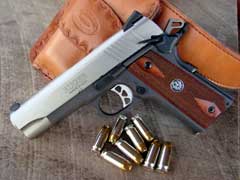
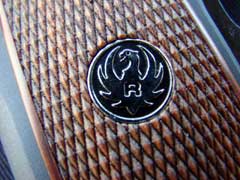
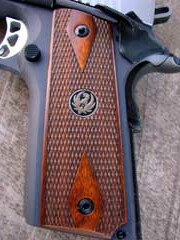
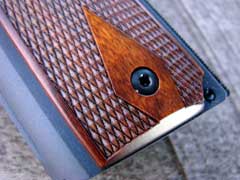
Thin, checkered grips offer a positive hold,
without being abrasive.
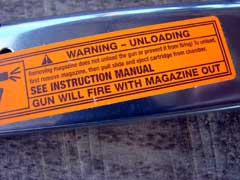
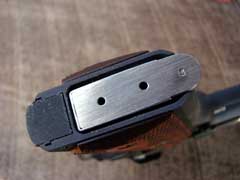
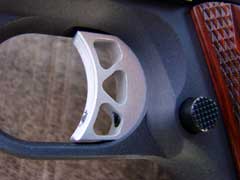

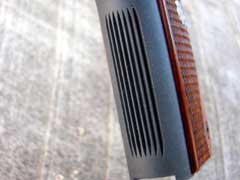
Checkered mainspring housing (top), grooved frontstrap
(bottom).

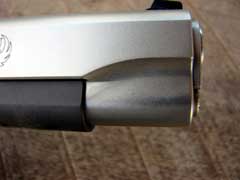
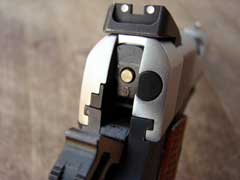

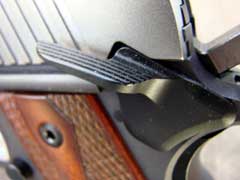
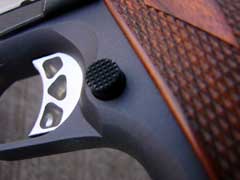
Slide stop (top), thumb safety (middle), magazine
release (bottom).
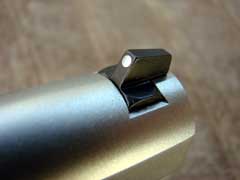
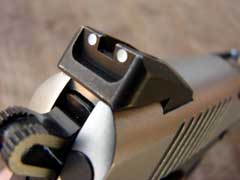
Novak LoMount sights.
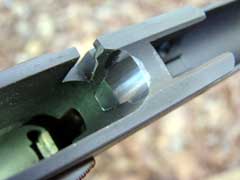
Polished titanium feed ramp.

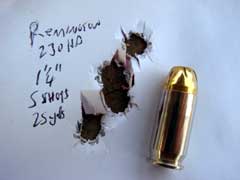
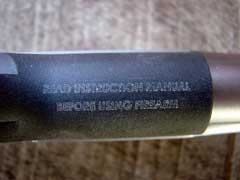
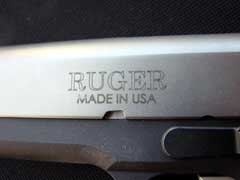
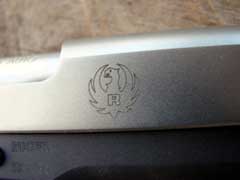
|
|
Ruger has just
introduced their version of a pistol that many experts consider
to be the ultimate fighting pistol; a "Lightweight
Commander" 45 ACP. The
original Commander, introduced
by Colt in 1949, was nothing but a 1911A1 with the
slide/barrel shortened by 3/4 inch, a rounded hammer spur, and a
lightweight aluminum frame. Very simple differences, but those
differences transform the handling and carrying qualities of the
pistol into a whole different weapon. Dropping almost three
quarters of a pound off the weight of a full-sized steel 1911,
while retaining the full-sized grip made a world of difference
in the way in which the pistol carries and handles, making the
Lightweight Commander much easier to carry comfortably all day,
while retaining the excellent qualities that make a 1911 a great
fighting pistol.
It has been almost
four years now since Ruger introduced their version of the 1911
pistol into the highly-competitive field of similar pistols
in the US market. Ruger quickly carved out their share of the
market by providing a high-quality made-in-the-USA pistol that
is priced lower than much of its competition. Almost
two years later, they introduced their all-steel SR1911CMD
with a shortened slide and barrel, but retaining the stainless
steel frame. In my opinion, shortening the slide and barrel does
very little to change the carrying ease of a 1911, as steel
Commander pistols weigh almost as much as their full-sized
counterparts. Now, Ruger has added to their SR1911 line by
introducing their "Lightweight Commander" version, the
SR1911CMD-A.
Aluminum versus steel. This is the question
that always is argued in a discussion of a Lightweight 1911
versus an all-steel 1911, and rightfully so. I have two friends
in the Marketing Department at Ruger; let's call them Mark and
Ken, because that is their names. Both are good, highly-educated
and dedicated family men. Mark has a background in metallurgical
engineering, and is not a fan of aluminum. Ken is a wine expert.
I do not drink wine, but have sat quietly and listened as he has
spoken with others knowledgeable in that language about the
qualities of one wine versus the other, and details about what
makes one wine superior to the other. Mark looks at a piece of
aluminum like Ken looks at a three-dollar bottle of MD 20/20.
Both men will acknowledge the existence of these things, but
neither will enjoy the experience. Me, I am neither highly
educated nor an expert on anything, and if my doctor keeps
pushing hard enough, I might have to try some wine. While I
really enjoy the packing qualities of a Lightweight Commander
1911 pistol, and am willing to acknowledge that an aluminum
frame will never be as strong as a steel frame, I like the way
the lighter gun carries on my hip. Sorry, Mark. I will also
concede that a glass of MD 20/20 might be useful to wash down a
good fried baloney sandwich before bed at night. Sorry, Ken.
Critical
specifications for the SR1911CMD-A are listed in the chart
below. The weights are listed in ounces, and linear measurements
in inches. The grip and frame widths were measured at their
widest points. The maximum width is measured across the frame
and includes the thumb safety lever. The height includes the
sights. The trigger pull is listed as pounds of resistance. The
weight includes the empty seven-round magazine. Length is
measured from the muzzle to the tip of the beavertail grip
safety.
| Weight |
28.5 ounces |
| Height |
5.45 inches |
| Length |
7.87 inches |
| Slide Width |
0.91 inch |
| Maximum Grip Width |
1.15 inches |
| Frame Width |
0.753 inch |
| Maximum Width |
1.258 inches |
| Trigger Pull |
4.25 pounds |
| Trigger Reach |
2.76 inches |
| Barrel Length |
4.3 inches |
| Magazine Capacity |
7 rounds |
| Magazines Supplied |
2 |
| Firing Pin Safety |
No |
| Magazine Disconnect Safety |
No |
| MSRP as of January 2015 |
$899.00 US |
It is important
to many folks that a 1911 not have a firing pin safety, often
referred to as a "Series 80", in reference to Colt
adding a firing pin safety to their pistols around 1983, and
renaming the pistols "Series 80". Series 70 and all
earlier 1911 pistols had no firing pin safety, but the main
innovation of the Series 70 was mainly the collett bushing, and
had nothing to do with the firing pin. However, many still refer
to a 1911 without a firing pin safety device as a "Series
70" style, no matter the brand nor vintage. The Ruger
SR1911 (and other 1911 pistols) already have in the design
several things that must occur before the weapon will fire. The
chamber must be loaded, the automatic grip safety depressed, the
manual thumb safety disengaged, and the trigger pressed. The
reason for Colt adding the firing pin safety to the Series 80
pistols, was that with a Series 70 and earlier gun, if it was
dropped upon its muzzle, it could possibly fire by the inertia
of the firing pin overcoming its spring. Ruger avoided that
possibility entirely by using a lightweight titanium firing pin,
so an extra firing pin safety device added to the system is
unnecessary, serves no purpose, and complicates a wonderful
design. Thankfully, Ruger found a better way.
I have covered
the details of the Ruger SR1911 in depth before, so here, I just
want to touch upon a couple of items that, while not
earth-shattering, they do make for a better pistol. The first is
a minor detail, but if you have ever had a plunger-retainer tube
come loose on a 1911, you will understand. The plunger tube
retains the springs and plungers for the slide stop and for the
thumb safety, and have always been staked to the side of the
frame, which works really well, unless something happens to
knock it loose. If it comes off, you are either on your hands
and knees searching for small parts, or more likely, on Brownell's
website just ordering some new ones. Either way, the pistol
is broken until you get those parts and get the tube staked on
again. Ruger eliminated this potential problem by machining the
plunger tube integral with the frame. It cannot become
unattached, because it is not attached. It is part of the frame.
I
tested for velocity with my chronograph set at ten feet from the
muzzle, and an air temperature of thirty-seven degrees
Fahrenheit and a relative humidity of fifty-two
percent. Velocity readings were taken at an elevation of
approximately 541 feet above sea level. Velocities are listed in
the chart below, and are listed in feet-per-second (fps). FMJ is
a full metal jacket bullet. JHP is a jacketed hollowpoint. DPX
is an homogenous copper hollowpoint bullet. Glaser is a
specialty pre-fragmented core inside a copper alloy jacket. PB
is Pow’RBall. LWSC is a cast lead
semi-wadcutter bullet. UHD is Remington Ultimate Home Defense
hollowpoint ammunition. HCL is a hard-cast lead bullet.
Velocities are listed in feet-per-second (fps). Bullet weights
are listed in grains.
| Ammunition |
Bullet Weight |
Velocity |
| Cor-Bon JHP |
200 |
1065 |
| Cor-Bon JHP |
165 |
1121 |
| Cor-Bon JHP |
230 |
1003 |
| Cor-Bon DPX |
185 |
1146 |
| Cor-Bon PB |
165 |
1187 |
| Cor-Bon Glaser |
145 |
1186 |
| Buffalo Bore HCL |
255 |
990 |
| Buffalo Bore JHP |
230 |
1012 |
| Buffalo Bore FMJ |
230 |
990 |
| Buffalo Bore JHP |
185 |
1160 |
| Atomic HP |
230 |
937 |
| Remington FMJ |
230 |
811 |
| Remington UHD |
230 |
821 |
| Handload LSWC |
200 |
1003 |
| WCC 1911 Ball FMJ |
230 |
808 |
The Lightweight Commander functioned
perfectly. Every cartridge fed, fired, and ejected flawlessly,
whether firing the pistol hand-held, or when it was secured into
the Ransom Rest for accuracy
testing. The slide never failed to lock open on an empty
magazine. Accuracy varied from not-so-good to match-grade,
depending upon the ammo used. This particular pistol really took
a liking to Remington UHD hollowpoint ammo with the 230 grain
Golden Sabre bullet. That ammo consistently grouped five shots
under two inches at twenty-five yards from the Ransom Rest. Most
ammo grouped between two and three inches, rested, at
twenty-five yards. The largest groups were fired with the 255
grain Buffalo Bore ammo, which surprised me, as in most pistols
it shoots really well. It just goes to prove that I can't be
sure until I have tried it, no matter the brand of ammo. 200
grain lead semi-wadcutter handloads performed very well.
The Lightweight SR1911 is a pleasure to
shoot. I like it better than the full-size model. It carries
better and conceals more comfortably. It is lighter, smoother,
and just seems bit more refined to me. I am not sure what
process they used to get there, but the finish on the slide is
very smooth, with every edge slightly rounded, even the edges of
the slide serrations. To my eyes, the two-tone appearance of the
black anodized frame contrasting with the satin stainless slide
looks great, and then the addition of the thin checkered grip
panels make this pistol look, feel, and shoot better than guns
costing twice its price.
One more small
detail that can easily go unnoticed, but important to someone
who has experienced a bullet hanging up, instead of sliding up
the feed ramp as it should, is that this lightweight Ruger has a
titanium feed ramp. Most feed ramps on aluminum-framed 1911
pistols are aluminum. There is normally nothing wrong with that.
If polished and kept clean, most shooters will never know the
difference. However, after a lot of use, an aluminum feed ramp
can become a bit rough, especially with some of the modern
high-performance hollowpoint bullets, and then feeding problems
ensue. Sometimes. However, to assure that this never becomes an
issue, Ruger uses a titanium feed ramp, which is inserted into
the frame in such a way that it will not come out. The titanium
will remain slick and polished forever, giving the bullets an
unobstructed path from the magazine to the chamber. Some would
address the problem with a ramped barrel, but that is not a
perfect solution, and I think this approach is better, as the
polished titanium feed ramp can accommodate even the widest
hollowpoint bullets on the market. Again, this is a detail that
Ruger did not have to do, but they did it anyway. It is good
insurance, but something not found on production pistols. As I
was typing this review, I got curious as to why they would go to
that extra trouble and expense for a seemingly minor detail, as
this is not a three-thousand-dollar pistol, so I called
Mark-The-Aluminum-Hater and asked him, regarding the titanium
feed ramp, something like, "Mark, I know why you did it,
but why did you do it?". His response was "To make it
better." He went on to state that Ruger plans to sell a lot
of these, and they want them running perfectly for a long time.
I often get accused of liking every gun that
I fire. Okay. Guilty. I love guns. What am I supposed to do?
It's like asking a biker if he likes motorcycles, or a Baptist
preacher if he likes fried chicken. Of course he does. A man is
supposed to love his work. However, every now and then I do run
across a gun that I like a bit better than most, and this new
Ruger falls into that category. They got the details right on
this pistol.
Check out the extensive line of Ruger
firearms and accessories online at www.ruger.com.
For the location of a Ruger dealer near you,
click on the DEALER FINDER at www.lipseys.com.
To order the SR1911 pistols online, click on
the Gun Genie at www.galleryofguns.com.
To order quality holsters for the Ruger
SR1911CMD-A, go to www.simplyrugged.com,
www.crossbreedholsters.com,
and www.usgalco.com.
To
order quality 45 ACP ammunition, go to www.buffalobore.com,
www.doubletapammo.com,
www.midsouthshooters.com,
and www.luckygunner.com.
Jeff Quinn
  
Got something to say about this article?
Want to agree (or disagree) with it? Click the following link to
go to the GUNBlast Feedback Page.
|
|
Click pictures for a larger version.
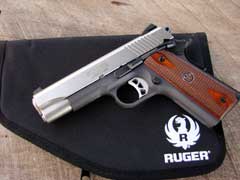
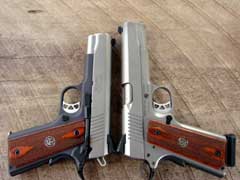
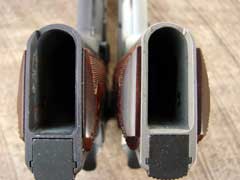
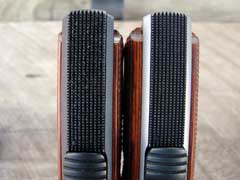
SR1911CMD-A (left) compared to full-size SR1911
(right).
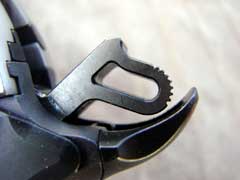
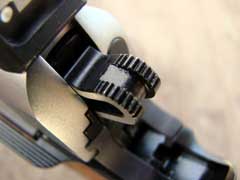
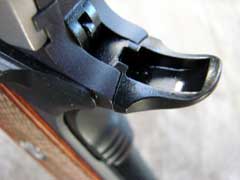
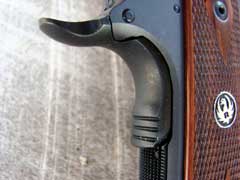
Upswept beavertail grip safety.

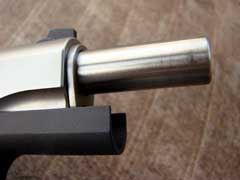
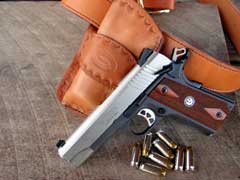
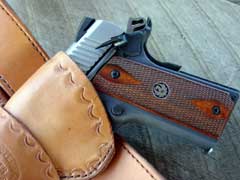
Simply Rugged "Shootist" holster and belt.
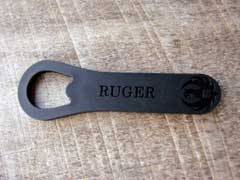
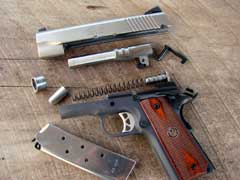
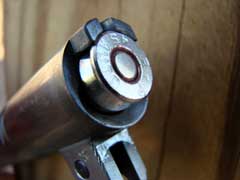
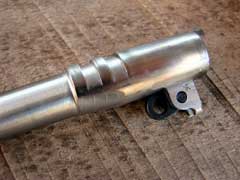
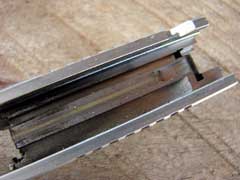
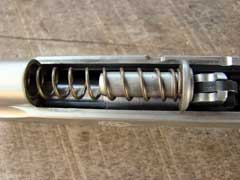

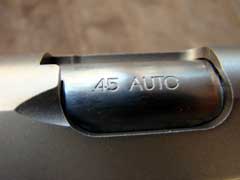
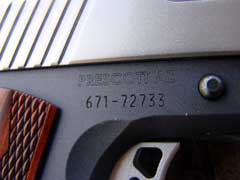
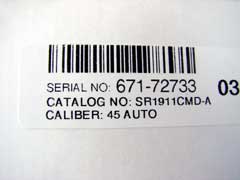
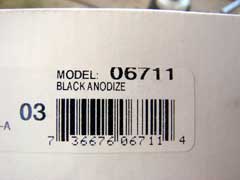
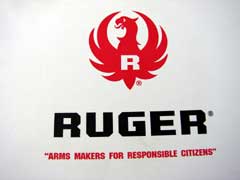
|
![]()